One important material in Dayton’s historic architecture is stone, which was used in early dwellings, key transportation infrastructure, and grand public buildings like the Old Courthouse.
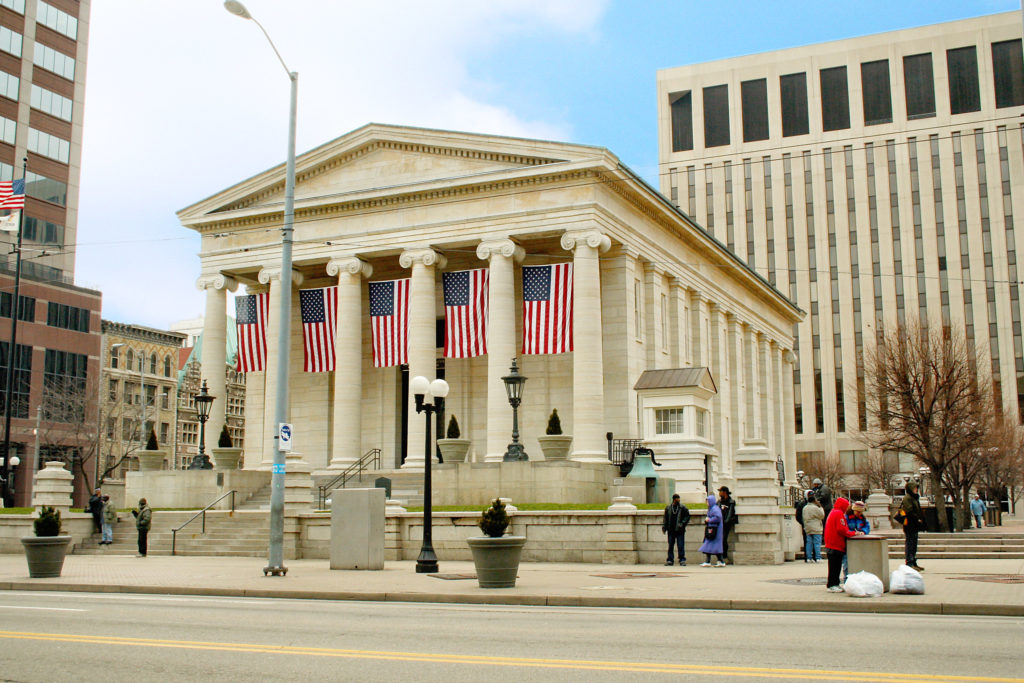
Most of the stone you see in these structures is a special type that is local to the area and was also used far beyond Dayton due to its quality and reputation.
The Dayton Formation refers to a local geologic formation containing limestone that is typically a “tan, pale cream, to white-colored rock.” The USGS describes it with additional geological detail: “gray to bluish-gray weathers grayish-white; medium to thick bedded; fine grained; dolomitic; 5 to 15 feet thick.”
This stone was known as Dayton Formation, Dayton limestone, and even “Dayton’s marble” (though it’s not actually marble). The significant presence of dolomite leads some to classify the rock not as true limestone, made primarily of calcite, but as a dolostone.
No matter the technical geological details, the Dayton Formation is historically significant and was widely used because it was a “durable, altered limestone that was well suited to architectural and engineering applications before concrete became widely available.”
The Dayton Formation was quarried at many sites in the Dayton area, including Beaverton (part of modern-day Kettering), Centerville, and off Wilmington Pike next to today’s Lakeshore Place apartments (the small lake there today is an extension of the old quarry).
What Structures Were Built with Dayton Formation Limestone?
You can see this Dayton Formation limestone at a wide variety of sites in the region and beyond. It was used for much of the Miami and Erie Canal including Lock 17 (c. 1833) which is today located at Carillon Park.

You can see it at Woodland Cemetery where both the chapel and gateway feature the stone with red Lake Superior Sandstone trim.
Centerville houses the largest collection of stone buildings in Ohio, and many of those early homes were built with Dayton Formation limestone including the Asahel Wright house and Walton house.
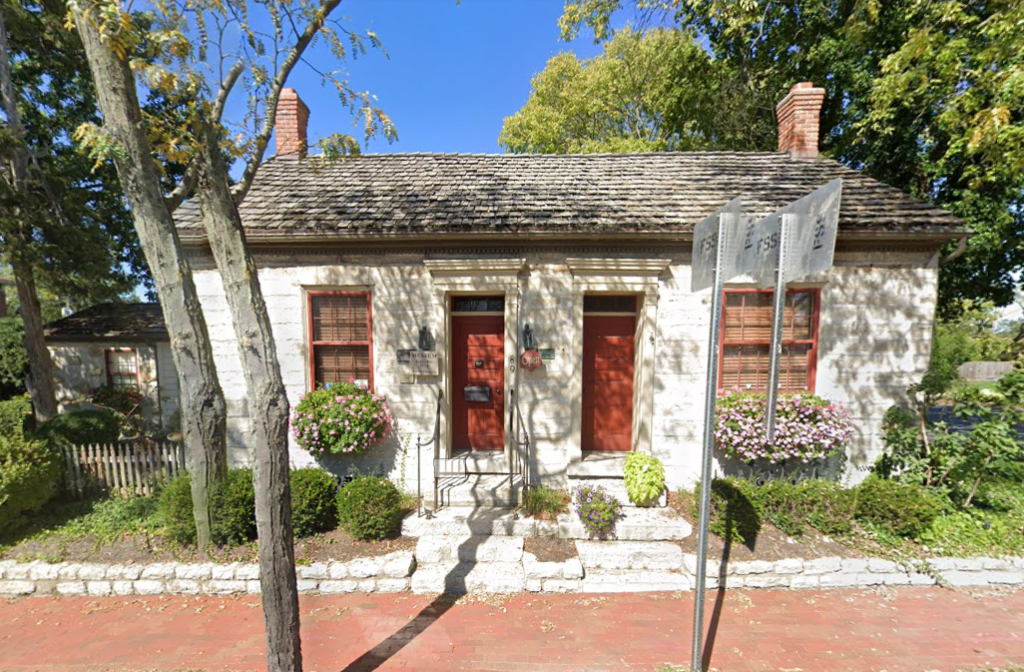
In addition, in older neighborhoods like Grafton Hill and St. Anne’s Hill, “you see this rock used in building foundations, the stone curbs, gate posts and tombstones.”
For examples outside the Dayton region, one of the most ornate sites built with it is the Cathedral of St. Peter-in-Chains in Cincinnati. An example at Ohio State is Orton Hall, an appropriate choice because it houses the university’s Geological Museum.
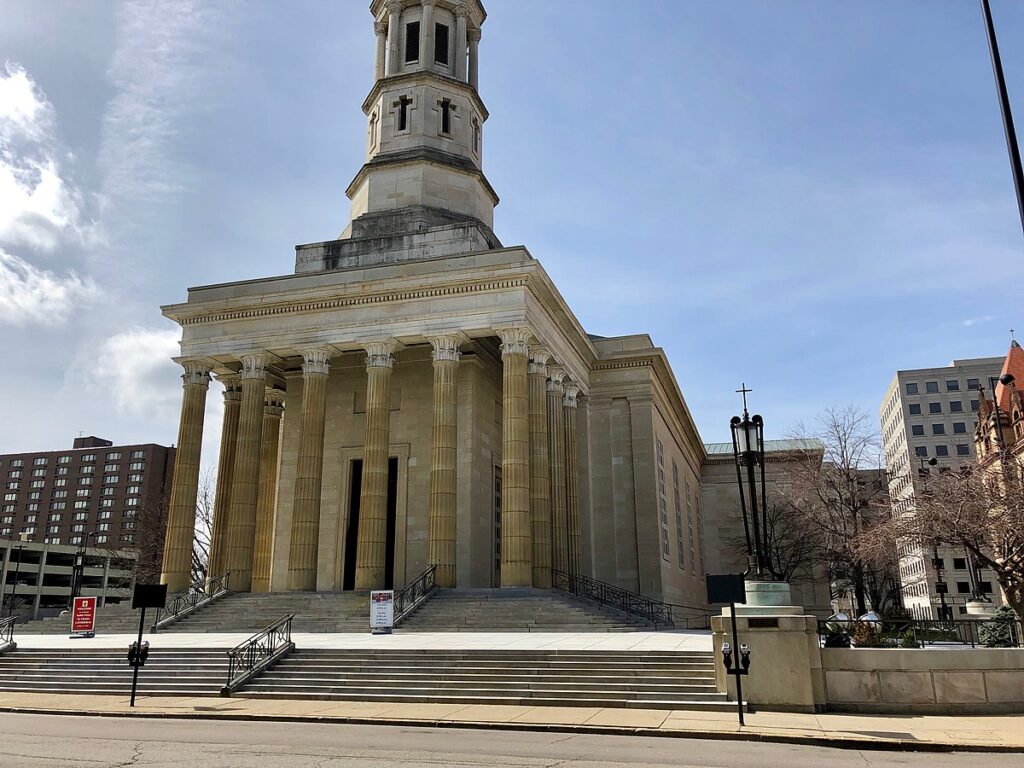
The most famous structure that has a connection to the Dayton Formation is none other than the Washington Monument in DC. A piece of limestone was quarried from McDonald Farm in Xenia and was sent to Washington to represent the state of Ohio since it was thought to be the finest building stone in the state. The stone was placed in the interior stairwell that runs on the outside of the elevator shaft.
In 1902, the Dayton, Lebanon and Cincinnati (DL&C) Railroad established a rail line that was conceived largely to serve the stone industry that sprung up due to intense demand for Dayton Formation limestone.
After the supply of Dayton formation in existing quarries began to be exhausted in the late 19th century, Henry Lewis and Harold Talbott purchased the Allen Quarry just east of Centerville which held an abundance of the rock. They upgraded the quarry and connected it to the main line in Centerville, and the DL&C railroad ran north from Lebanon through Centerville, into Kettering, and across Wilmington Pike. The Dayton-Kettering Connector, today a popular walking and biking path next to Rubicon Creek near UD, was a DL&C line.
Dayton limestone eventually became less influential as other building materials proliferated: “the growth during the 1920s of the readymix concrete industry, combined with increased availability of high-quality Indiana Limestone from quarries in southcentral Indiana, drastically diminished the market for Dayton Formation dolostone” (Schmidt).
Sources
A Brief History of the Dayton, Lebanon and Cincinnati Railroad
Geology gem, Wright State Newsroom
The Geologic Story of the Stone Used in Centerville’s Historic Stone Houses
The Dayton Limestone, Dr. Michael Sandy
Hidden History of Dayton, Ohio, Tony Kroeger
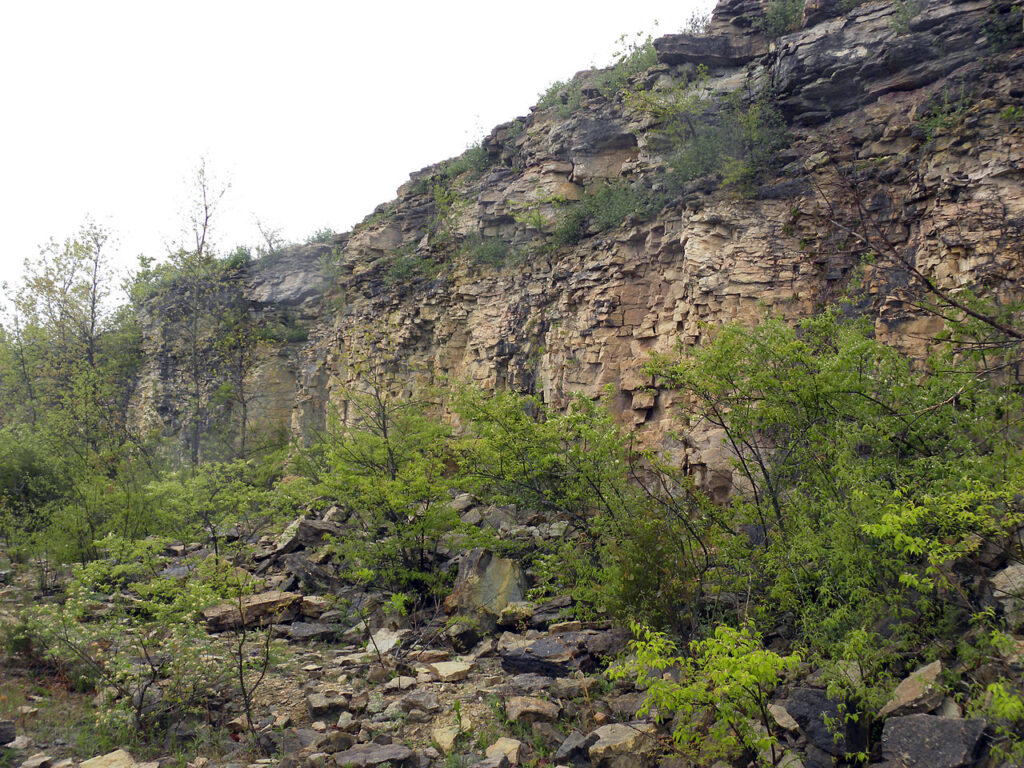
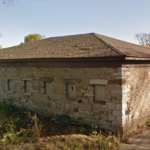

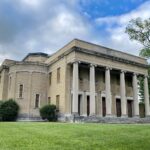
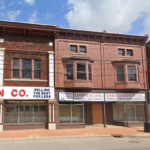
Really enjoyed reading the article on the Dayton Formation Limestone. Thanks, Andrew!